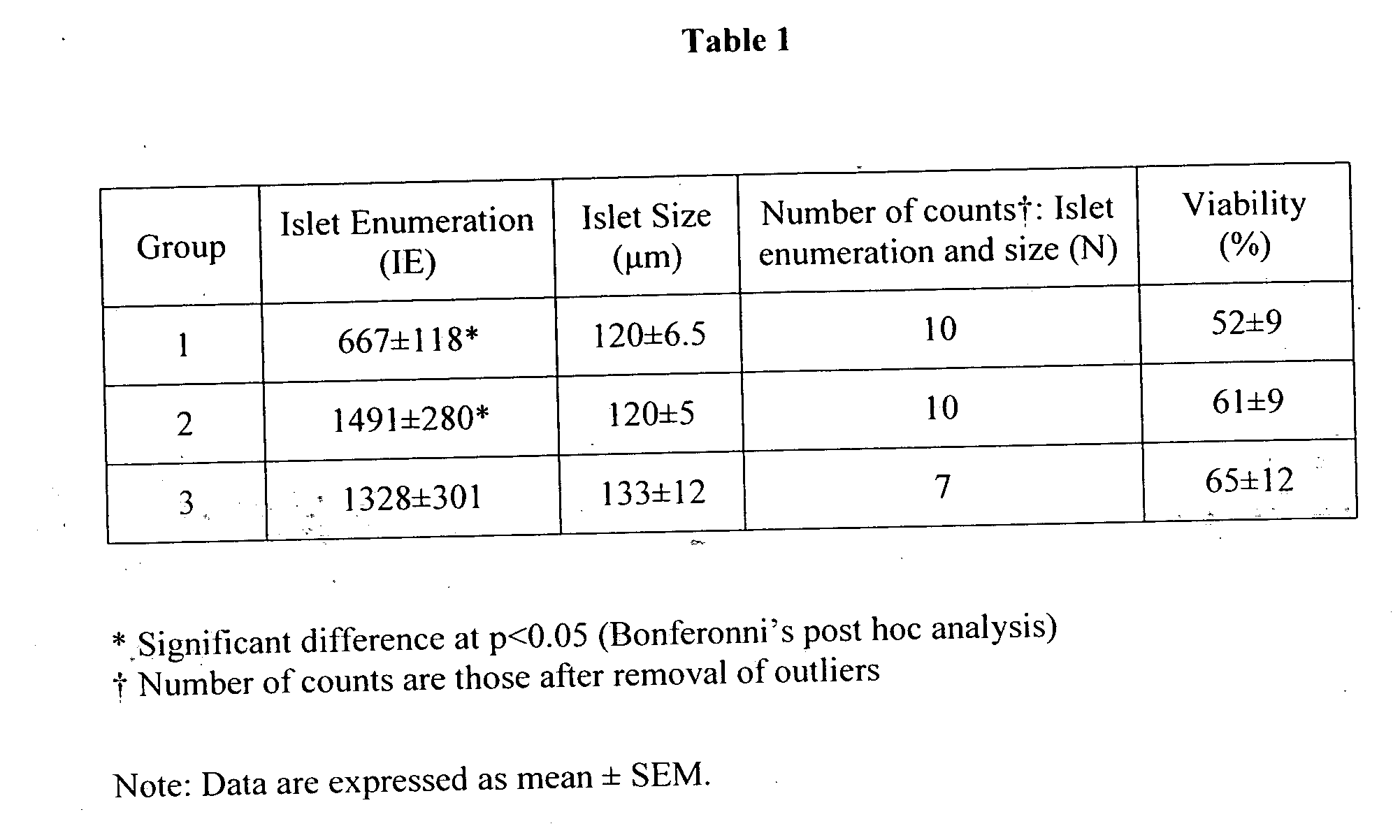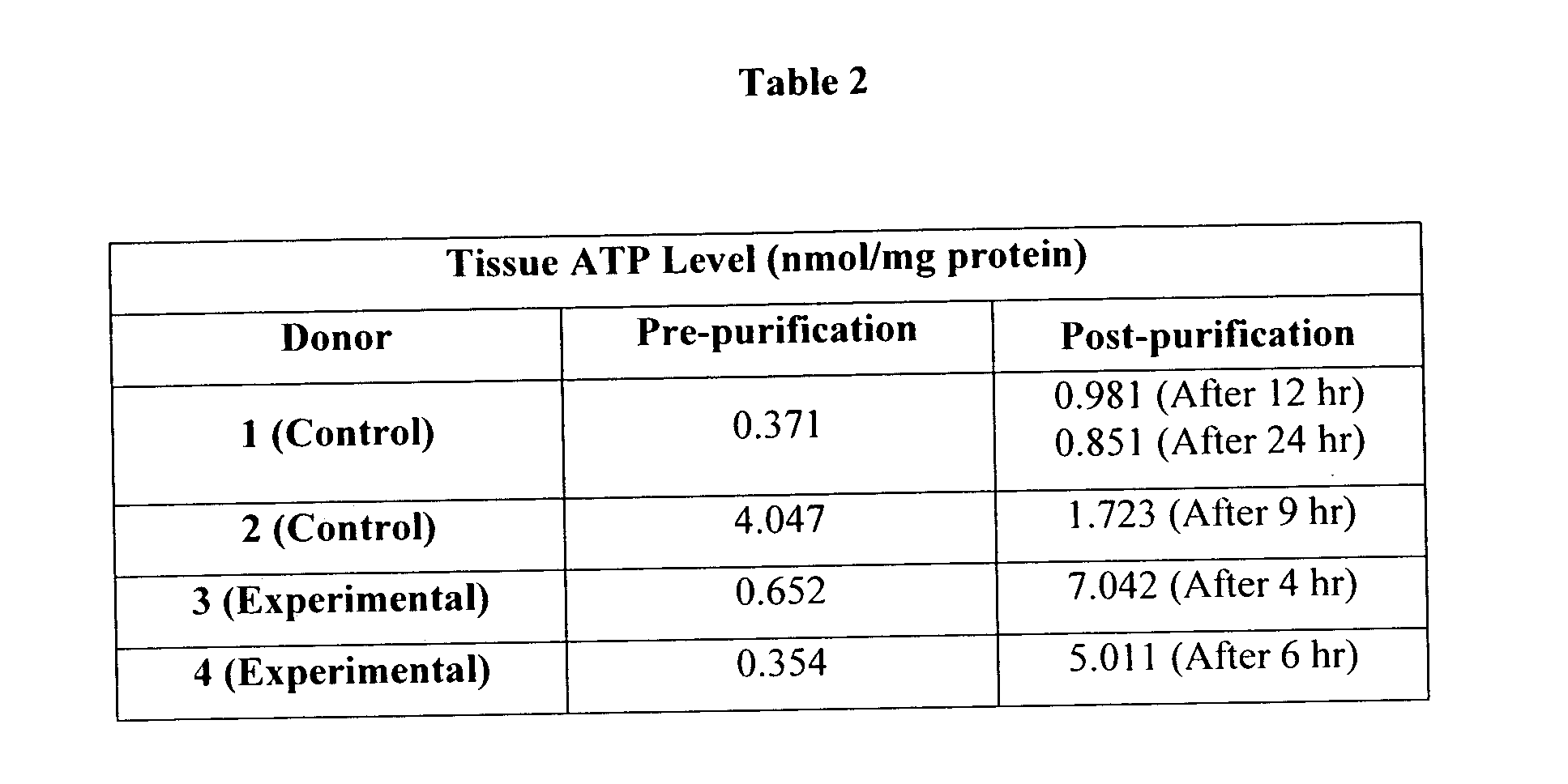Methods of islet isolation and transplantation
a technology of islets and oxygen, applied in the field of islet isolation and transplantation, can solve the problems of affecting the yield of healthy islets, compromising the viability of islets, and affecting the amount of oxygen, so as to enhance the oxygenation of islets, improve the viability and recovery of islets, and enhance the health and viability of islets
- Summary
- Abstract
- Description
- Claims
- Application Information
AI Technical Summary
Benefits of technology
Problems solved by technology
Method used
Image
Examples
example 1
[0029] An experiment was conducted to compare the effectiveness of UW, TLM, and ePFC in their ability to maintain rat pancreata for subsequent isolation. Six rat pancreata were assembled into three groups. Group 1 was immersed in a solution of UW, Group 2 was immersed using TLM at the interface of UW and PFC. and Group 3 was infused with ePFC. Hank's Balanced Salt Solution (HBSS) was used for distention of the pancreata because ePFC did not achieve adequate distention.
[0030] Two pancreata were transferred into 1 of 3 different solutions in 500 mL polypropylene straight-side wide-mouth jars. Group 1 consisted of 60 mL UW solution, Group 2 of the two layer solution containing 60 mL of UW solution (“Viaspan”) and 60 mL of PFC (pre-oxygenated for 30 minutes at 100% oxygen), and Group 3 of 60 mL ePFC (pre-oxygenated for 30 minutes at 100% oxygen). Both the employed immiscible PFC and ePFC contained perfluorodecalin, a type of PFC. In all three groups, metal grills were applied above the...
example 2
[0047] Human donor pancreata were obtained to test the effect of ePFC on cellular viability. Two donor pancreata, referred to as Donors 1 and 2, were used as controls and did not receive ePFC infusion. Two experimental donor pancreata, referred to as Donors 3 and 4, were infused with ePFC. The islets were isolated using the standard Edmonton protocol.
[0048] Table 2 presents tissue ATP levels pre- and post-purification for Donors 1-4. Table 3 presents Tissue Energy Change pre- and post-purification for Donors 1-4. “Purification” refers to the purification of islets that is conducted as part of the Edmonton protocol. The experimental data for Donors 3 and 4 shows markedly increased ATP and Tissue Energy Change compared to the control data for Donors 1 and 2. In fact, the controls show reductions in most of these energy levels. The increase in ATP and Tissue Energy Change clearly demonstrates that the viability and health of the islets treated with ePFC is enhanced and that these isle...
PUM
| Property | Measurement | Unit |
|---|---|---|
| size | aaaaa | aaaaa |
| size | aaaaa | aaaaa |
| width | aaaaa | aaaaa |
Abstract
Description
Claims
Application Information
 Login to View More
Login to View More - R&D
- Intellectual Property
- Life Sciences
- Materials
- Tech Scout
- Unparalleled Data Quality
- Higher Quality Content
- 60% Fewer Hallucinations
Browse by: Latest US Patents, China's latest patents, Technical Efficacy Thesaurus, Application Domain, Technology Topic, Popular Technical Reports.
© 2025 PatSnap. All rights reserved.Legal|Privacy policy|Modern Slavery Act Transparency Statement|Sitemap|About US| Contact US: help@patsnap.com



